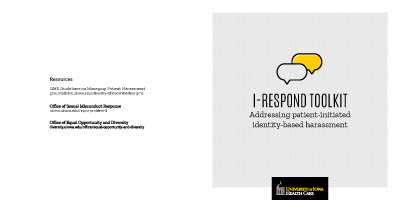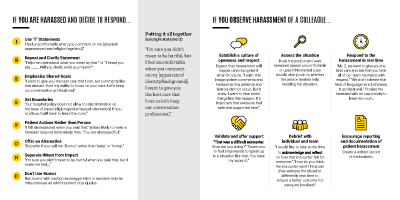
The University of Iowa
Department of Ophthalmology and Visual Sciences
Sexual harassment is defined by the U.S. Equal Employment Opportunity Commission as, "unwelcome sexual advances, requests for sexual favors, and other verbal or physical conduct of a sexual nature," that, "explicitly or implicitly affects an individual's employment, unreasonably interferes with an individual's work performance, or creates an intimidating, hostile, or offensive work environment" (EEOC, https://www.eeoc.gov/eeoc/publications/fs-sex.cfm). A national survey of mostly female ophthalmologists and ophthalmology trainees showed that 59% had experienced sexual harassment during their careers, most commonly during training [1]. Of the ophthalmologists who reported experiencing sexual harassment, 45% had been harassed by patients [1]. Few had reported their most significant experience with sexual harassment to an authority [1].
The Toolkit for Responding to Patient-Initiated Verbal Sexual Harassment was created in 2019 as part of a training program for ophthalmology faculty and trainees. It is meant to supplement existing sexual harassment training curricula. Toolkit strategies are designed for responding to patient-initiated verbal sexual harassment, but may be applied to other forms of mistreatment, including harassment based on race, age, or sexual orientation. If one decides to respond to patient-initiated verbal sexual harassment, generally a non-confrontational, non-judgmental tone is preferred [4].
 |
 |
Hock LE, Scruggs BA, Oetting TA, Abramoff MD, Shriver EM. Tools for Responding to Patient-Initiated Verbal Sexual Harassment. EyeRounds.org. Posted August 20, 2019; Available from https://EyeRounds.org/tutorials/sexual-harassment-toolkit/index.htm